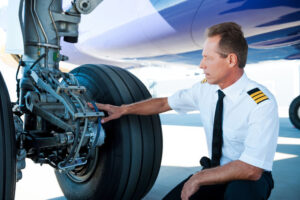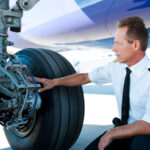Aviation airspace is not as crowded as it once was, neither are ATC towers
ATC Zero (Air Traffic Control Zero) means the FAA is unable to safely provide the published ATC services within the aviation airspace managed by a specific facility. Regardless of the official definition of ATC Zero, it’s the last thing I want to hear when I’m in the clouds at 200 kts.
I’m pretty sure that the term “ATC Zero” became familiar to pilots during the 9/11 attacks, but it’s worth mentioning that the Covid-19 pandemic is causing the phrase to resurface. Of course, there’s always the chance of a facility closing because of severe weather or some other assault by mother nature, but those closures are usually short-lived. The facility closures that are caused by Covid-19 have the potential to remain in place for longer periods of time.
For example, a state or local government might require a 14-day quarantine after an employee tests positive for the virus, preventing that facility from reopening immediately after cleaning. This means a longer period of shifting traffic to adjacent facilities as they work to establish a new traffic flow. Because of this, pilots flying during these uncertain times need to be prepared for the unexpected.
One of the most important factors for pilots to consider is an adequate fuel load for any number of contingencies. If a facility shuts down because of an infected employee changes could evolve rapidly. Pilots should always have an alternate in mind when doing their flight planning – diversions could be issued at a moment’s notice. There is also the very real possibility of a lengthy hold while each aircraft is directed to a new traffic flow.
Of course, we should always fuel for our pre-selected alternate, but we should also be aware that we may be diverted outside of a facility’s airspace, if it suddenly closes. So it might be a good idea to carry even more fuel – just in case.
And one more thing to consider now is a good time to brush up on non-tower procedures, especially if you don’t regularly visit small, uncontrolled airports. Keep your ears open and start listening for other traffic BEFORE you approach the traffic pattern. And if you find yourself landing at an airport that is suddenly without controllers, make sure you review the layout of the airport and taxi diagrams. Make the appropriate callouts while taxiing, crossing runways, and taking off, as well as during your approach and landing.
These are crazy times we’re living in. There are radar displays posted on social media with large chunks of empty aviation airspace with no planes transiting the area. It’s obvious that the Air Traffic Control system is well prepared for an emergency such as this worldwide pandemic, which thankfully gives us one less thing to worry about. But pilots should still do their part to prepare for possible outages and always, always throw on some extra fuel.
RELATED CTS TRAINING










